
CORRECTIVE EXERCISES FOR ROUNDED SHOULDERS
Corrective Exercises for Rounded Shoulders
If you are one of the people who spend a lot of time sitting in front of a desk, you are surely looking for a solution for your rounded shoulders. My Sports Injury Clinic offers a sustainable solution to improve postural imbalance in the normal daily society.
The position of rounded shoulders is that these are forwardly protruded and the back arched leading to excessive lumbar spine lordosis (hyper-lordosis) . In addition to this, the position of rounded shoulders is usually accompanied by the forward head posture, which makes it very important to work all these postural corrections together.
The shoulder is composed of a set of joints, muscles, and ligaments that provide great mobility and stability. Occasionally, we maintain inadequate postures that put these structures in excessive tension, creating postural patterns such as rounded shoulders and forward head.
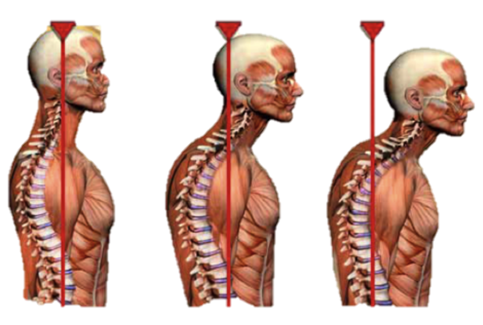
Occasionally, rounded shoulders can cause pain in the shoulder or neck. But generally, there are no symptoms due to rounded shoulders. However, Sunisa Chaiklieng and Maytinee Krusun (2015) found that a large number of office workers are exposed to the risk of ergonomics, which can trigger the position of rounded shoulders.
To counteract the effects caused by this sustained posture, we compile some exercises recommended by physiotherapy experts to perform at home or in a gym. However, the best solution to improve this situation is to assist a health professional.
Mobility Exercises
- For the first exercise, we must place ourselves in four points. Then, we place a hand behind our head and direct our elbow towards the ceiling so that we rotate our trunk. We perform 10 slow and controlled repetitions and make the same movement with the opposite hand.
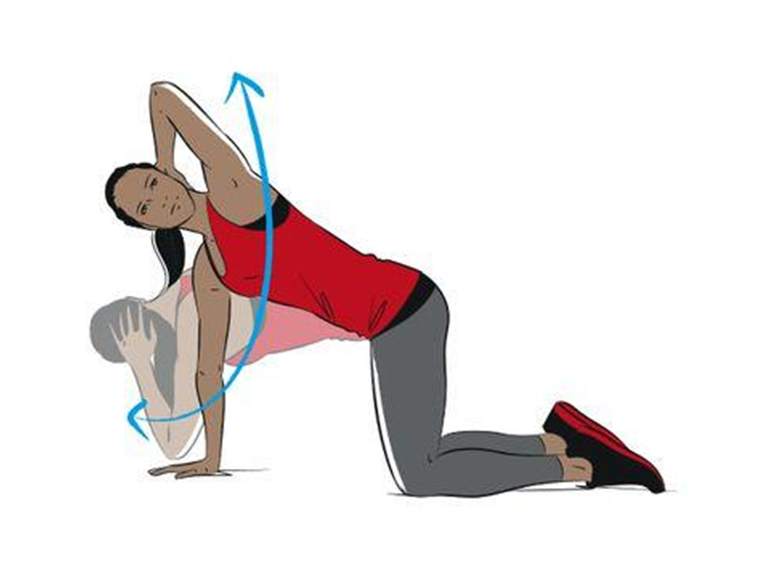
- For the next exercise, you just need a chair. You put yourself back in four points, put your elbows on the chair and bring your buttocks towards your feet. You must repeat this movement at least 10 times.
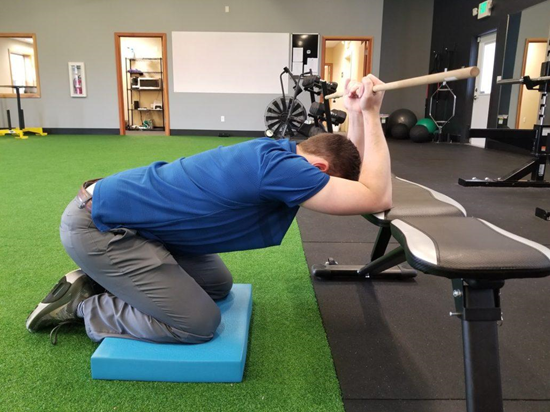
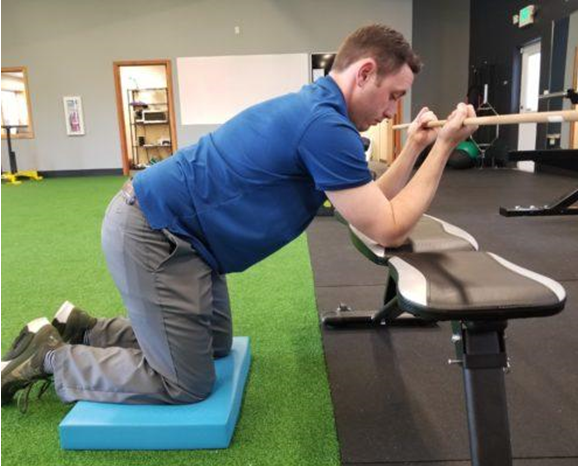
Strengthening exercises
- For the following exercises we must place ourselves face down on the floor (they can put a yoga mattress or a towel) we stretch our arms above the head. From this position, we should only take off the full arms and feet from the ground and stay for 3 seconds.

We must repeat this movement at least 8 times.
- For the next exercise, we should lie on our stomachs just like the previous exercise. The difference in this exercise is that we must keep our arms at our sides. We must take off the arms from the ground and keep them off 3 seconds. Like the previous exercise, we must perform at least 8 repetitions.
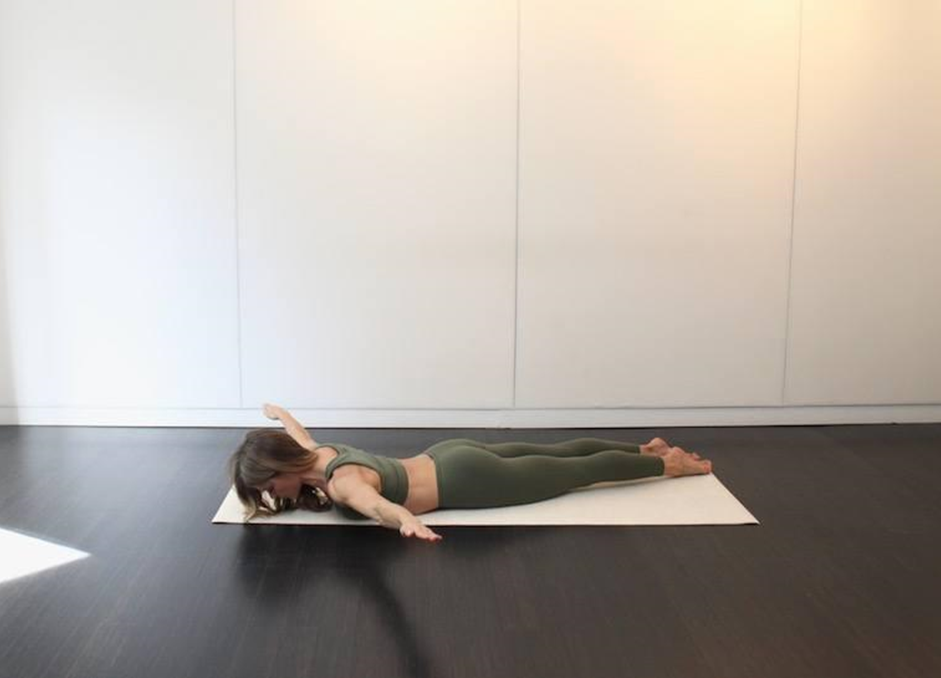
- In the following exercise, we must place ourselves in a position of four points. From this position, we will lift one arm and the opposite leg of that arm, keeping them fully stretched we will hold that position for 3 seconds.
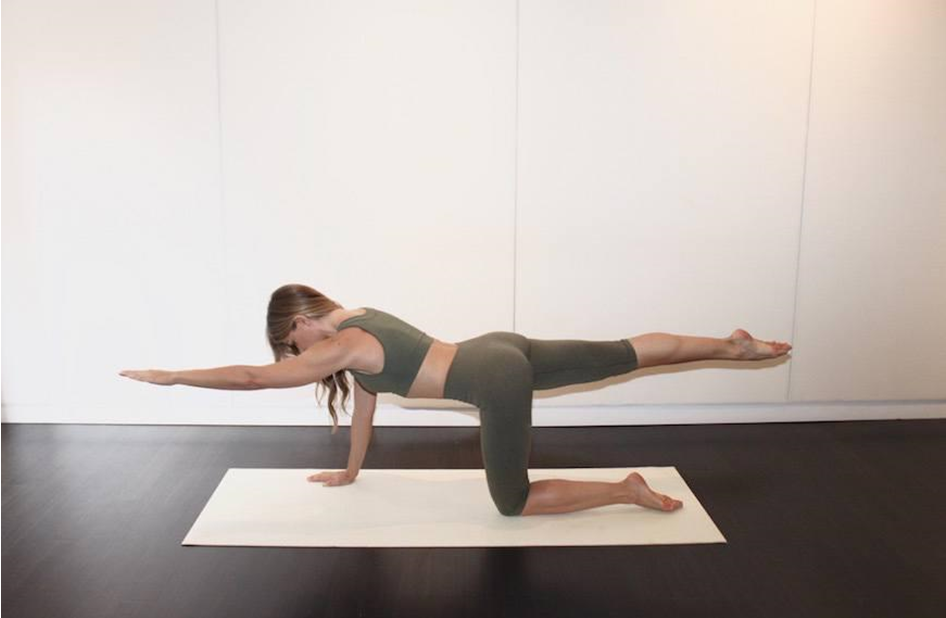
We must perform at least 8 repetitions per side of this exercise.
To these exercises, a training plan for core strengthening and postural reeducation exercises should be added. We recommend that these exercises must be supervised by a physio manchester, to verify that they are done correctly.
References
The effects of manual treatment on rounded-shoulder posture, and associated muscle strength. Christopher Kevin Wong, Denise Coleman, Vincent di Persia, Judi Song, Dennis Wright. Journal of Bodywork and Movement Therapies, Volume 14, Issue 4, October 2010, Pages 326-333.
The mechanical effect of kinesiology tape on rounded shoulder posture in seated male workers: a single-blinded randomized controlled pilot study. Jin-Tae Han , PT, PhD, Jung-Hoon Lee , PT, PhD & Chul-Han Yoon. Physiotherapy Theory and Practice , An International Journal of Physical Therapy . Volume 31, 2015 – Issue 2.
Health Risk Assessment and Incidence of Shoulder Pain Among Office Workers, Sunisa Chaiklieng, Maytinee Krusun. Procedia Manufacturing, Volume 3, 2015, Pages 4941-4947.
Association Between Forward Head, Rounded Shoulders, and Increased Thoracic Kyphosis: A Review of the Literature. Deepika Singla, Zubia Veqar. Journal of Chiropractic Medicine. Volume 16, Issue 3, September 2017, Pages 220-229.
The effect of scapular posterior tilt exercise, pectoralis minor stretching, and shoulder brace on scapular alignment and muscles activity in subjects with round-shoulder posture. Ji-hyun Lee, Heon-seock Cynn, Tae-lim Yoon, Chang-hee Ko, Woo-jeong Choi, Sil-ah Choi, Bong-sam Choi. Journal of Electromyography and Kinesiology. Volume 25, Issue 1, February 2015, Pages 107-114.
The effect of manual therapy and stabilizing exercises on forward head and rounded shoulder postures: a six-week intervention with a one-month follow-up study. Kiana Fathollahnejad, Amir Letafatkar & Malihe Hadadnezhad. BMC Musculoskeletal Disordersvolume 20, Article number: 86 (2019)
Lynch SS, Thigpen CA, Mihalik JP, et al The effects of an exercise intervention on forward head and rounded shoulder postures in elite swimmers British Journal of Sports Medicine 2010;44:376-381.
Struyf F, Nijs J, Mottram S, et al Clinical assessment of the scapula: a review of the literature British Journal of Sports Medicine 2014;48:883-890.
Ghanbari A, Ghaffarinejad F, Mohammadi F, et al Effect of forward shoulder posture on pulmonary capacities of women British Journal of Sports Medicine 2008;42:622-623.
The effect of complex training on the children with all of the deformities including forward head, rounded shoulder posture, and lumbar lordosis. Hae-Chan Park, Yang-Soo Kim, Sang-Hun Seok, and Soo-Kyung Lee. Journal of Exercise Rehabilitation. 2014 Jun; 10(3): 172–175.
Head and shoulder posture affect scapular mechanics and muscle activity in overhead tasks. Charles A. Thigpen, Darin A. Padua, Lori A. Michener, Kevin Guskiewicz, Carol Giuliani, Jay D. Keener, Nicholas Stergiou. Journal of Electromyography and Kinesiology. Volume 20, Issue 4, August 2010, Pages 701-709.

